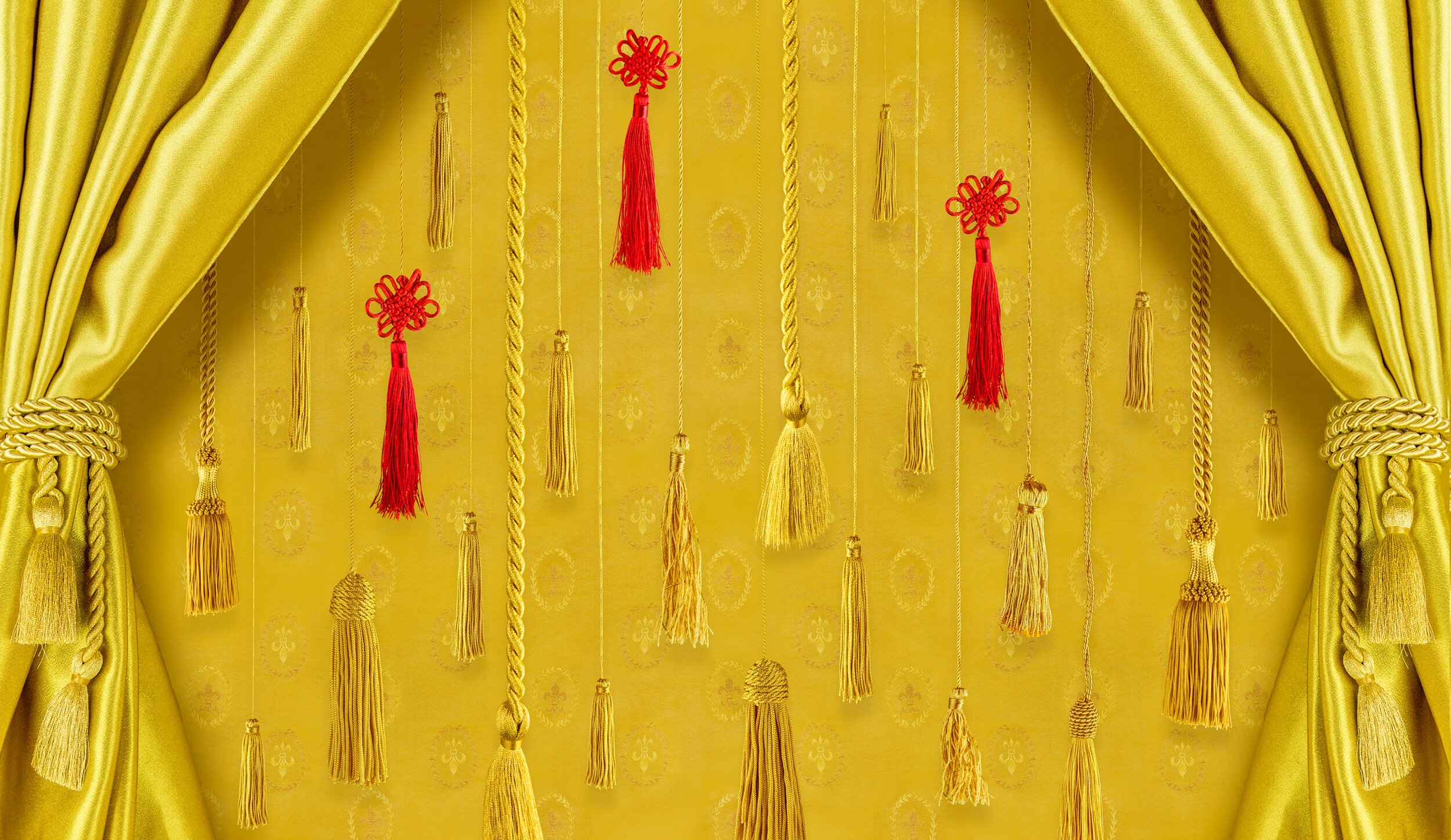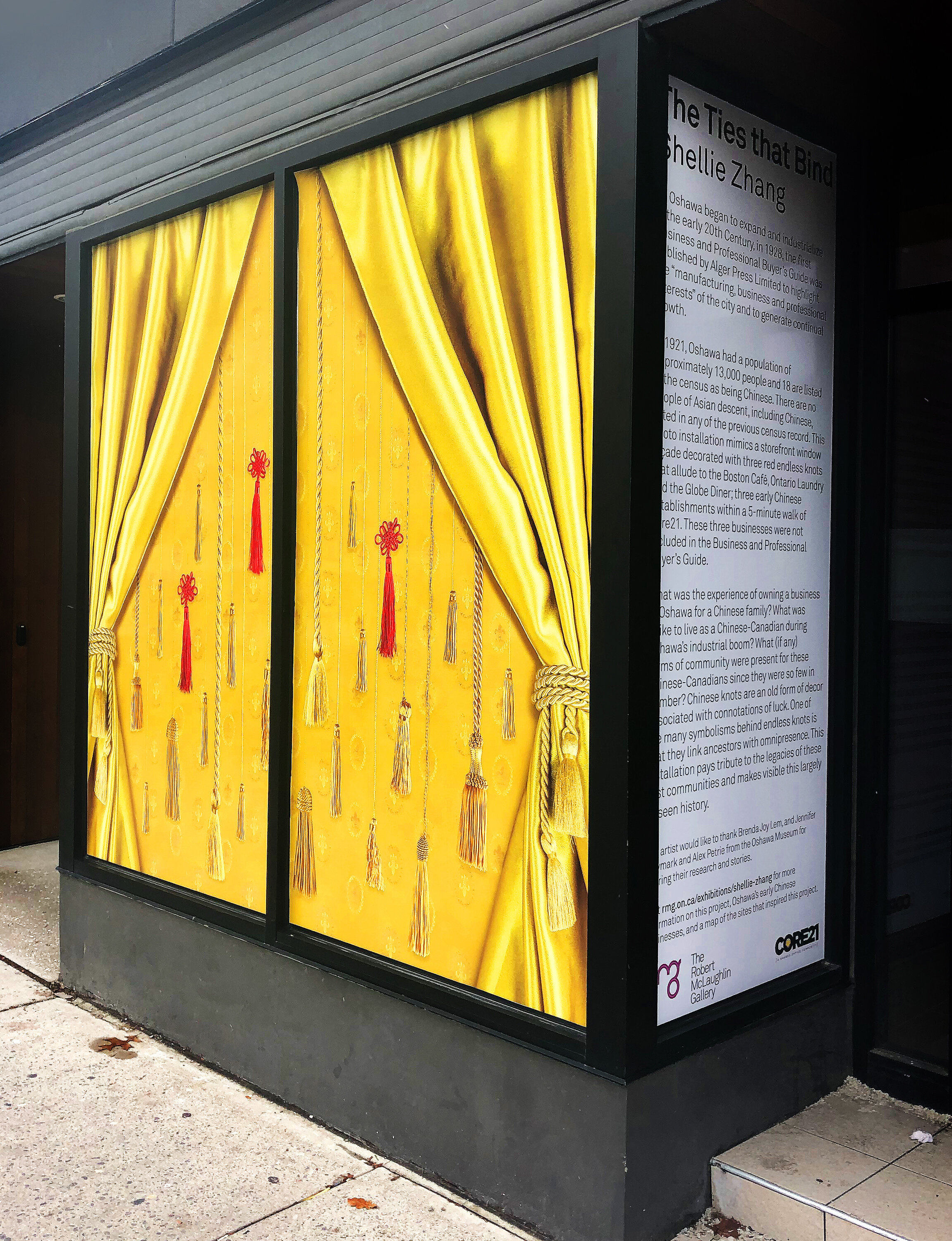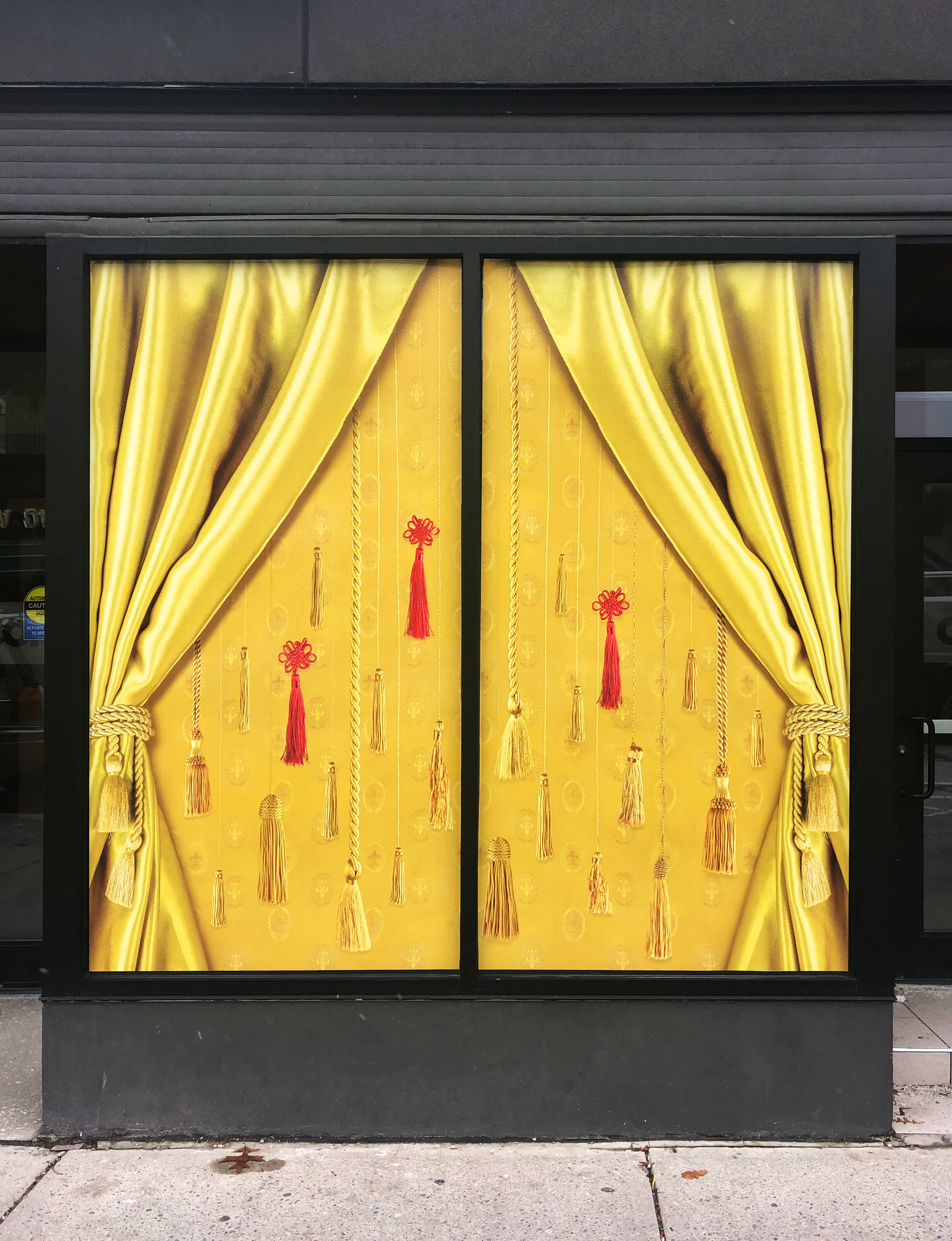The Ties that Bind, 2018
Vinyl Print on Glass
46” x 87”
As Oshawa began to expand and industrialize in the early 20th century, in 1928, the first Business and Professional Buyer’s Guide was published by Alger Press Limited to highlight “manufacturing, business and professional interests” of the city and to generate continual growth.
In 1921, Oshawa had a population of approximately 13 000 people. Of that 13 000 people, 18 are listed in the census as being Chinese. There are no people of Asian descent, including Chinese, listed in any of the previous census record. This photo installation mimics a storefront window façade decorated three red endless knots that allude to the Boston Café, Ontario Laundry and the Globe Diner; three early Chinese establishments within a 5-minute walk of Core21. These three businesses were not included in the Business and Professional Buyer’s Guide.
In the foreword of the Buyer’s Guide, the publishers ask readers to bear with them as it is their first time undertaking a document of this nature and that errors of omission may be present. They cite the following lines from Puck’s epilogue in Shakespeare’s A Midsummer Night’s Dream:
“Gentles, do not reprehend, if you pardon, we will mend.”
The Ties that Bind pays tribute and commemorates local histories have not been chronicled within the downtown Oshawa core. What was the experience of owning a business in Oshawa for a Chinese family? What was it like to live as a Chinese-Canadian during Oshawa’s industrial boom? What (if any) forms of community were present for these Chinese-Canadians since they were so few in number? Chinese knots are an old form of decor with connotations of luck associated. One of the many symbolisms behind endless knots is that they link ancestors with omnipresence. This installation pays tribute to the legacies created from these first communities to make this largely unseen history visible.
Visit the Robert McLaughlin Gallery’s website to learn more about the site’s history and relation to the project. Special thanks for Brenda Joy Lem, and Jennifer Weymark and Alex Petrie from the Oshawa Museum for sharing their research and stories.



